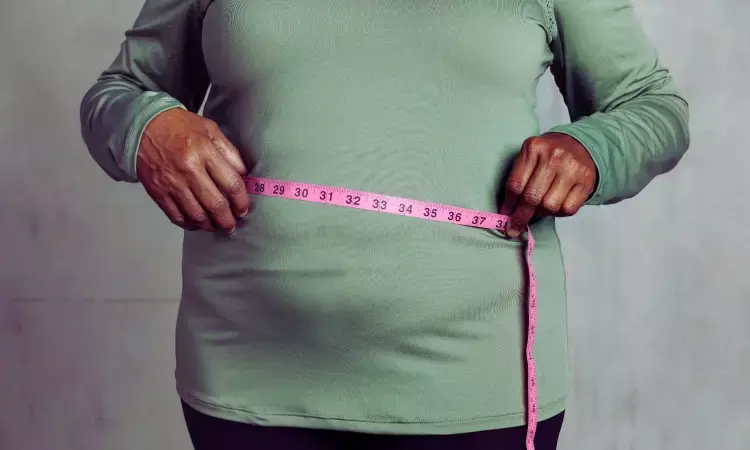- Home
- Medical news & Guidelines
- Anesthesiology
- Cardiology and CTVS
- Critical Care
- Dentistry
- Dermatology
- Diabetes and Endocrinology
- ENT
- Gastroenterology
- Medicine
- Nephrology
- Neurology
- Obstretics-Gynaecology
- Oncology
- Ophthalmology
- Orthopaedics
- Pediatrics-Neonatology
- Psychiatry
- Pulmonology
- Radiology
- Surgery
- Urology
- Laboratory Medicine
- Diet
- Nursing
- Paramedical
- Physiotherapy
- Health news
- Fact Check
- Bone Health Fact Check
- Brain Health Fact Check
- Cancer Related Fact Check
- Child Care Fact Check
- Dental and oral health fact check
- Diabetes and metabolic health fact check
- Diet and Nutrition Fact Check
- Eye and ENT Care Fact Check
- Fitness fact check
- Gut health fact check
- Heart health fact check
- Kidney health fact check
- Medical education fact check
- Men's health fact check
- Respiratory fact check
- Skin and hair care fact check
- Vaccine and Immunization fact check
- Women's health fact check
- AYUSH
- State News
- Andaman and Nicobar Islands
- Andhra Pradesh
- Arunachal Pradesh
- Assam
- Bihar
- Chandigarh
- Chattisgarh
- Dadra and Nagar Haveli
- Daman and Diu
- Delhi
- Goa
- Gujarat
- Haryana
- Himachal Pradesh
- Jammu & Kashmir
- Jharkhand
- Karnataka
- Kerala
- Ladakh
- Lakshadweep
- Madhya Pradesh
- Maharashtra
- Manipur
- Meghalaya
- Mizoram
- Nagaland
- Odisha
- Puducherry
- Punjab
- Rajasthan
- Sikkim
- Tamil Nadu
- Telangana
- Tripura
- Uttar Pradesh
- Uttrakhand
- West Bengal
- Medical Education
- Industry
Obesity and Hypothyroxinemia Together Heighten Risk of LGA Births in Pregnant Women: Study Finds

China: A recent Chinese cohort study published in Reproductive Biology and Endocrinology has found that maternal obesity and isolated maternal hypothyroxinemia (IMH) in late pregnancy significantly increase the risk of large-for-gestational-age (LGA) births. IMH, defined by low free thyroxine (FT4) with normal thyroid-stimulating hormone (TSH) levels, independently raised LGA risk by 1.3 times.
Obesity alone was linked to a nearly sixfold higher LGA risk and a sevenfold increase in IMH. Notably, women with both conditions had a 7.6-fold greater risk of delivering LGA newborns, indicating a strong synergistic effect. The findings highlight the importance of monitoring BMI and thyroid function during pregnancy.
The combined impact of isolated maternal hypothyroxinemia and other contributing factors on fetal growth outcomes has not been well established. To address this gap, Bin Zhang, Nanjing Medical University, Changzhou, China, and colleagues aimed to investigate whether the presence of IMH in the third trimester—characterized by free thyroxine (FT4) levels below the 5th percentile and TSH levels within the normal range—along with elevated prenatal body mass index (BMI), jointly increases the risk of delivering large-for-gestational-age newborns.
For this purpose, the researchers conducted a retrospective analysis of 11,478 Chinese pregnant women, utilizing laboratory data, including thyroid hormone levels, routine biochemical tests, and hospitalization records from a specialized hospital.
The study led to the following findings:
- The prevalence of obesity (BMI ≥ 30 kg/m²) and isolated maternal hypothyroxinemia (IMH) among the study population was 20.1% and 4.5%, respectively.
- Obese women had a 6.96-fold higher risk of developing IMH compared to women with normal weight (BMI < 25 kg/m²).
- The risk of delivering large-for-gestational-age (LGA) newborns was 5.88 times higher in obese women than in those with normal weight.
- Women with IMH had a 1.32-fold increased risk of LGA births compared to euthyroid women.
- These associations remained consistent in sensitivity analyses conducted among women under 35, first-time mothers, and those without pregnancy complications.
- Women with both obesity and IMH had a 7.60-fold greater risk of delivering LGA newborns compared to euthyroid women with normal weight.
- There was a statistically significant interaction between BMI categories and IMH on the risk of LGA births.
- Subgroup analyses confirmed this interaction among younger women, those with multiple pregnancies, and those without pregnancy-related complications.
The researchers found that in the large cohort of Chinese pregnant women, both obesity and isolated maternal hypothyroxinemia (IMH) in late pregnancy were independently associated with an increased risk of delivering large-for-gestational-age newborns. Notably, the coexistence of these two conditions further amplified this risk.
"The findings emphasize the potential value of combining prenatal BMI assessment with thyroid hormone profiling to identify women at elevated risk for LGA births," the authors stated. They further noted, "If confirmed in future studies, this approach could have significant clinical and public health implications, particularly given the growing concern surrounding LGA-related health outcomes."
Reference:
Zhang, B., Xi, S., Zhan, Z. et al. Maternal obesity and the incidence of large-for-gestational-age newborns in isolated hypothyroxinemia pregnancies: a comparative cohort study. Reprod Biol Endocrinol 23, 60 (2025). https://doi.org/10.1186/s12958-025-01394-z
Dr Kamal Kant Kohli-MBBS, DTCD- a chest specialist with more than 30 years of practice and a flair for writing clinical articles, Dr Kamal Kant Kohli joined Medical Dialogues as a Chief Editor of Medical News. Besides writing articles, as an editor, he proofreads and verifies all the medical content published on Medical Dialogues including those coming from journals, studies,medical conferences,guidelines etc. Email: drkohli@medicaldialogues.in. Contact no. 011-43720751


